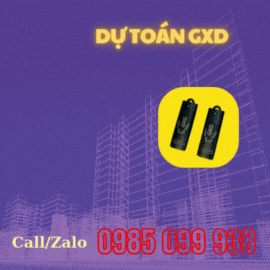Làm sao để có thể thương thảo được nhiều hợp đồng EPC?
Có phải bạn đang muốn Công ty mình thoát khỏi các hợp đồng dùng phương thức đấu thầu và kiếm được nhiều hợp đồng theo cách thức thương thảo hơn? Với vai trò là một tổng thầu, chiến lược dự toán và đấu thầu của Công ty Xây lắp và Phát triển Hedley là dùng phương thức thỏa thuận cho phần lớn các hợp đồng xây lắp của mình. Chúng tôi cố gắng thuyết phục các chủ đầu tư không trao hợp đồng trên cơ sở giá thầu thấp, mà thay vào đó là thương thảo riêng với chúng tôi. Việc này đòi hỏi sự nỗ lực tập trung và nhận thức về các mục tiêu cụ thể liên quan đến kinh doanh và tiếp thị. Nó cùng đòi hỏi ta phải cộng tác với các nhà thầu cơ khi am hiểu phương thức EPC.
Phương pháp mà chúng tôi áp dụng trong thương thảo với các khách hàng tiềm năng là một kế hoạch gồm 5 bước như sau:
Bước 1: Lọt vào danh sách ngắn các nhà thầu (không quá 3 đối thủ cạnh tranh) của các khách hàng mới
Bước 2: Trúng thầu trên cơ sở giá bỏ thầu thấp, và sau đó thực hiện công việc hợp đồng thật tốt.
Bước 3: Biến các khách hàng mới tinh và các khách hàng mới là đối tác một lần trở thành khách hàng thường xuyên
Bước 4: Biến các khách hàng thường xuyên thành khách hàng trung thành, những người sẽ chỉ dùng ta để thực hiện các dự án của họ.
Bước 5: Thương thảo mọi hợp đồng với các khách hàng thường xuyên và khách hàng trung thành.
Chiến lược của chúng tôi là mỗi năm có 25% khách hàng mới và 75% là khách hàng thường xuyên. Kế hoạch của chúng tôi là biến những khách hàng thường xuyên này thành những khách hàng trung thành, những người chỉ sử dung công ty chúng tôi để thi công các dự án của mình. Mục tiêu lớn nhất của chúng tôi là áp dụng thương thảo cho 90% số lượng hợp đồng của mình.
Bạn đã có chiến lược hợp đồng với khách hàng, được lập thành văn bản và đem ra áp dụng hay chưa?
Biết khách hàng muốn gì
Khi muốn tăng số lượng hợp đồng EPC của mình, bạn phải xác định được các khách hàng tiềm năng của mình muốn gì. Ngày nay mỗi chủ đầu tư đều mong muốn nhà thầu có lịch tiến độ thi công nhanh, có đội ngũ nhân lực chất lượng và phải có giá thật cạnh tranh. Đây mới chỉ là các yêu cầu dự án tối thiểu để lọt vào danh sách ngắn. Vì thế, để chuyển một khách hàng thường xuyên thành một khách hàng trung thành cho các hợp đồng theo hình thức thương thảo, bạn phải mang đến cho họ nhiều hơn những gì họ mong đợi.
Với các chủ đầu tư thích hợp đồng dạng thương thảo, họ muốn các nhà thầu cung cấp nhiều hơn là các dịch vụ tối thiểu. Ít nhất là họ muốn các rủi ro ít hơn, không có vấn đề trục trặc tại công trường, các dịch vụ và giá trị đầy đủ, không rắc rối, không phát sinh hay điều chỉnh, đảm bảo thi công trong phạm vi ngân sách dự án, đảm bảo hoàn thành đúng thời hạn, trình độ chuyên môn kỹ thuật và tay nghề cao nhất, đào tạo tốt nhất và giám sát công trường giỏi nhất.
Nếu bạn muốn có được nhiều hơn nữa các hợp đồng EPC, bạn cần cân nhắc các vấn đề thực tế sau:
-Bạn có thể chào những dịch vụ “vượt trội” nào cho khách hàng của mình sao cho nó đủ nặng ký để giúp bạn có quyền thương thảo một hợp đồng EPC với khách hàng?
-Tại sao chủ đầu tư nên áp dụng thương thảo hợp đồng với công ty bạn?
-Nếu bạn không chào thêm dịch vụ, liệu khách hàng sẽ chỉ yêu cầu bạn tham gia đấu thầu cho công trình hay thế nào?
Hướng dẫn các khách hàng thích đấu thầu
Hãy giải thích cho những khách hàng thích đấu thầu của bạn hiểu rằng phương pháp đấu thầu truyền thống tạo ra những mục tiêu đối lập giữa chủ đầu tư, tổng thầu, nhà thầu HVAC và các nhà thầu phụ. Khi các nhà thầu thắng thầu do cung cấp những yêu cầu tối thiểu theo thiết kế và yêu cầu kỹ thuật của dự án, do có giá bỏ thầu thấp, và do có những ưu tiên, các thách thức sẽ phát sinh với họ. Các nhà thầu bỏ giá thấp sẽ bảo vệ lợi nhuận của mình bằng cách thu hồi lại tối đa thông qua việc phát sinh công việc, dùng các nhân lực phù hợp nhất với mình và không quan tâm đến mục tiêu chung của dự án. Các nhà thầu trúng thầu chỉ do giá thấp sẽ gặp phải áp lực là phải cùng lúc làm hài lòng nhiều chủ đầu tư của nhiều dự án khác nhau.
Với hợp đồng thông qua thương thảo, chủ đầu tư sẽ có được dự án với sự quan tâm đầy đủ của nhà thầu, các dịch vụ cung cấp thêm mà họ cam kết thực hiện, và mục tiêu để dự án có thể thành công. Hình thức hợp đồng và tin cậy lẫn nhau này ràng buộc các bên vào một nhiệm vụ chung. Hơn cả việc giá thầu thấp, nó khiến các bên trở thành một tập thể cùng thực hiện.
Ngoài ra, hợp đồng đấu thầu trọn gói kiểu truyền thống đặt chủ đầu tư vào tình thế phải đảm bảo rằng hồ sơ mời thầu, thiết kế và yêu cầu kỹ thuật phải thật hoàn hảo. Chủ đầu tư thường thuê tư vấn kỹ thuật để lập thiết kế. Không có sự tham gia của nhà thầu, chủ đầu tư phải chịu hoàn toàn trách nhiệm khi có trục trặc, thay đổi hay mâu thuẫn nảy sinh. Nhà thầu chỉ hợp đồng thi công những gì có trong thiết kế và yêu cầu kỹ thuật, không hơn không kém. Các trục trặc do chủ đầu tưm như các thay đổi trong công trường, thiết kế tồi …sẽ làm phát sinh chi phí và kéo dài thời gian thi công.
Áp dụng phương pháp thương thảo hợp đồng, nhà thầu sẽ gánh vác nhiều trách nhiệm và nghĩa vụ cho chủ đầu tư bao gồm một số hoặc tất cả các công việc sau: sự chính xác trong thiết kế, bản vẽ hoàn chỉnh, quy mô công việc, hiện trạng và yêu cầu về công trường, quản lý hợp đồng, chất lượng vật tư, tổng ngân quỹ dự án, các mâu thuẫn trên hiện trường và lịch tiến độ.










